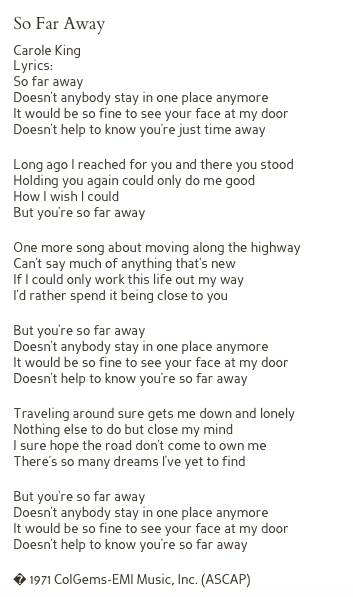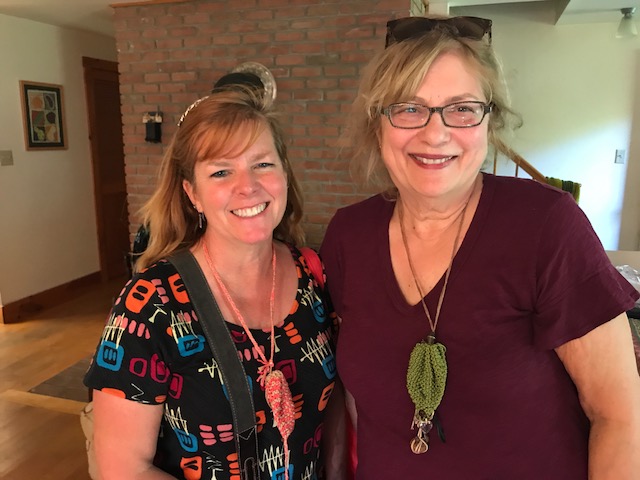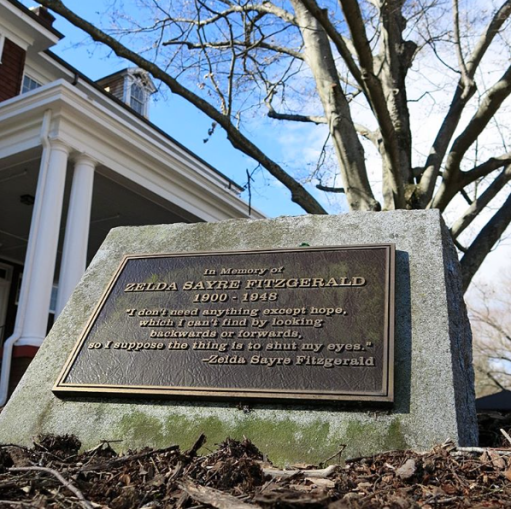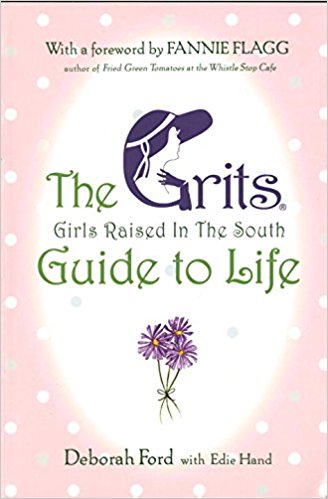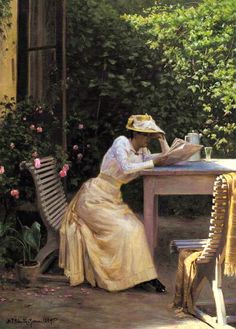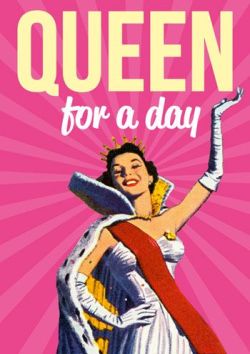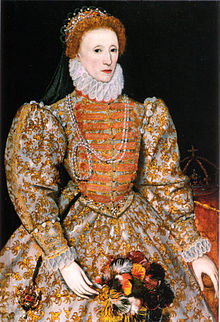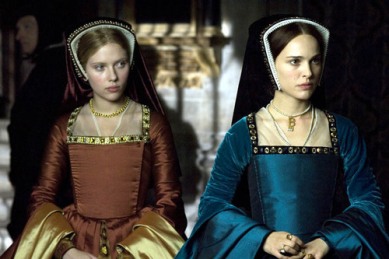Unlike the father in the popular Twitter feed, book, and short-lived television show starring William Shatner, Sh*t My Dad Says (Justin Halpern), my mother was never gross or profane (God forbid!). But she still managed to fill my head with some real stinkers.
My mother was raised in a fairly strict, upper middle-class home in the 1940s and 1950s South, where manners and social standing were emphasized. Although my maternal grandmother was a Vermont farm girl, once she and my Alabama-born grandfather moved to Atlanta when my mother was a toddler, you’d never have guessed that my grandmother had ever been north of the Mason-Dixon line.

My mother was sweet, hospitable, polite. Things I think I learned from her. She also taught me to love reading, to be kind to animals, and to always have Kleenex within reach. That’s important. We tend to drippy noses in my family, and you don’t want to be caught without a tissue! Of course, in her youth, it would’ve been monogrammed handkerchiefs.

She taught us well. My siblings and I are all excessively polite, maybe not by Southern standards, but we tend to seem goofy anywhere else in the country. We are all neat and tidy. Although I am less neat and tidy than I used to be since I work full time, am working on my PhD, have 5 animals in the house, and live with a wonderful guy who isn’t so neat and tidy (love you, Bob).

She also imparted words of supposed wisdom that she honestly believed to be true, but which I have found have either messed with my self-image or made me wonder if I was adopted. Yes, there are baby pictures of me, and yes, I look like my mother, but still…
- Every woman should own at least one pair of red shoes. She believed this, most definitely, and my sister Ellen will defend that statement with her last breath. But I beg to disagree. I have survived fine with nary a pair of red shoes in my closet. I wore red Keds as a child, so maybe that counts, but I had to wear boys’ Keds at the time because of my short, wide feet, and in the 1960s there probably weren’t a lot of color choices. I wore them because they fit, not because they were red. Ellen talked me into buying a pair of red sandals a few years ago, and during a recent closet cleanout, I realized I had NEVER worn them and put them in the charity collection bag I was filling up. I work in an animal shelter and tend to spend my spare time in my old shabby clogs that act as bedroom slippers. My shoe choices are dictated by comfort and the fact that I have bad feet (bunions, corns, hammer toes; TMI, I know) so red shoes–don’t need ’em, have no use for ’em. Sorry, Mom. And Ellen.

I think these shoes are darned cute. Not buying them, though. - Change your purse to match your shoes. Not going to happen. Ever. EVER. My mother’s closet had special shelves and cubbies for her shoes and purses. She had purses to match every pair of shoes. She kept the purses in silk bags. She paid a lot of money for the purses. When she was in hospice, one of the things she insisted on was that I take her purses. (We didn’t wear the same size shoes, or she would have made me take those too, I am sure.) I have the purses, and they are very nice. I never use them. One of them is red; she probably hoped against hope that I would buy some red shoes to go with said purse. I don’t have the time or patience to be switching purses. And again, I work at an animal shelter. I haven’t found a purse that matches my grubby black shoes I wear to clean dog kennels and cat habitats. I have 2 purses that I really like and I might switch them out every year or so, if that. In the late Nora Ephron’s book I Feel Bad About My Neck: And Other Thoughts on Being a Woman, she wrote a whole chapter about hating her purse and not understanding women who spend large sums of money on collecting them.
She had the same purse “failing” that I have. I felt so much better about myself after I read her book. Just find me a bag that my stuff fits in and let me go. I’ll never find my keys on the first try no matter what magic the purse offers.

- Women over 40 should never wear sleeveless attire. I bought this one for a while. Her point was that women shouldn’t expose the jiggly droopy bits that arms develop with age, unless you’re a gym rat or Michelle Obama.

Getting old isn’t for sissies, as it’s been said. Your body changes. As noted in the title of Nora Ephron’s book, necks get crepey. Arms get droopy. Laugh lines appear around the eyes and mouth. And I do consider them laugh lines. I earned those suckers with my polite smiling. Some people call that arm fat “batwings”. People (women, really, it’s only women) even get arm lifts, or brachioplasty, from cosmetic surgeons. We’ve been made self-conscious to the point of obsession about our arms.  I spent many years living in a hot climate and avoiding tank tops and only wearing pretty sleeveless dresses if I had a cardigan on at the same time (just to cover my arms). I say, “No more!” Maybe if I had extreme, super droopy batwings, I’d feel differently. But I see a lot of people out in the world who don’t seem to care how they look. I haven’t quit caring; far from it. But if it’s hot or if I’m going somewhere fancy and want to wear a sleeveless (not strapless, that’s a different thing altogether) dress, I will.
I spent many years living in a hot climate and avoiding tank tops and only wearing pretty sleeveless dresses if I had a cardigan on at the same time (just to cover my arms). I say, “No more!” Maybe if I had extreme, super droopy batwings, I’d feel differently. But I see a lot of people out in the world who don’t seem to care how they look. I haven’t quit caring; far from it. But if it’s hot or if I’m going somewhere fancy and want to wear a sleeveless (not strapless, that’s a different thing altogether) dress, I will.

- Similarly, she said women over 40 shouldn’t go out in public bare-legged. Panty-hose at all times with skirts, dresses, even shorts. Hell no. Pantyhose are hot and itchy. They get runs in them. They sag around your ankles. They are expensive and don’t last long.
 Unless we are talking about either appropriate dress for a job interview or super fun colors and patterns of hose and tights, I am out.
Unless we are talking about either appropriate dress for a job interview or super fun colors and patterns of hose and tights, I am out. - You’d be prettier if you cut your hair/pushed your hair out of your face/kept your hair short. I still hear Mom’s voice telling me to cut my hair. Hey, Mom! It’s MY HAIR, not yours. This has caused me endless insecurity about my hair, the shape of my face, my eyeglasses once I had to start wearing them, my looks in general since I was a little girl. Mom used to take us to a place in Atlanta called David of Paris for pixie cuts back in the 60s. I think Monsieur David only knew how to do one hair cut. Short. Yes, it was cute when I was 5.

The David of Paris look. 
Still young enough for the sleeveless look. I’ve had short hair much of my life, and at times it has been a good look, mostly when I was thinner and going blond.

A thin-with-blond-short-hair stage. But I’m wearing a sleeveless dress and no hosiery. Not sure if Mom would approve. Then I’d let my hair grow out because I wanted to, and Mom would start on the subtle and not-so-subtle hints for me to cut my hair, or at least pull it off my face. But preferably cut it. I’m trying to tune out that Mom voice in my head when it comes to my hair. I am mostly succeeding these days, mostly, kinda sorta…Should I cut it?

Bangs, shoulder length hair, glasses. It’s a look I am happy with. And if I have Pugcat with me, no one’s looking at my hair anyway! - If you can’t sleep, close your eyes and lie still. You’ll at least be rested in the morning. FALSE. I still try this. It does not work. Mom would tell me this most often when I couldn’t sleep the night before the first day of school every year. I would lie in bed, eyes squeezed shut, and imagine all the awful things that might happen in the upcoming school year, dread filling me, my stomach hurting. I still have sleepless nights, and I lie there, looking at the clock once in a while, thinking I’ll rest, when I’m actually a churning ball of anxiety over whether I’ll ever get to sleep. During one really bad spell of insomnia, I would throw in the towel and get up and bake in the middle of the night. I went on a quest to make the perfect morning bun–those flaky twists of buttery croissant dough, coated with cinnamon sugar and baked in muffin tins. This took quite a few batches to perfect (which I did, thanks to Nancy Silverton’s Pastries from the La Brea Bakery.
Each morning I would take the resulting pastries to work. I was exhausted, but popular. Now if I get up, it’s either to read or to write. The insomnia is generally now a case of too much caffeine in my system, but it’s just as exhausting as the dread-filled kind.
- If you feel a sore throat coming on, gargle with warm saltwater. Maybe there is some truth to this, but I hated it. I suffered from a lot of sore throats growing up, and I still wish some doctor had ordered a tonsillectomy for me. But they quit doing them routinely to kids around the time I was born. My Vermont farmgirl grandmother had trained as a nurse and worked in a hospital in New York, where she met my doctor grandfather. The warm saltwater gargle was her thing. Mom would make me take a big glass of the stuff into the bathroom to gargle with anytime I mentioned a tickle in my throat. I’d still get a sore throat, and my mouth would taste of salt. Maybe it is what led to my weird love of salt now. I’ll put flakes of it on my tongue to suck on, and I adore Dutch salty licorice. Maybe I’ll try sucking on salty licorice next time I feel a sore throat coming on.

I’m sure there are gems of my own I would impart to the daughter I never had. She’d probably roll her eyes, and do just the opposite. What are my truths?
- Dark chocolate makes everything better. Maybe not literally. You’ll still be ill or broke or alone. But the chocolate will make it just a little bit better somehow. I swear.

Medicinal chocolate. (Image from Scientific American.) If you don’t believe me, do you trust Scientific American? Writer Katherine Harmon Courage descibed the health benefits of chocolate in scienctific terms in the article “Why is dark chocolate good for you? Thank your microbes.”
- Your feet are too important for cheap or uncomfortable shoes. That was something my ever-wise maternal grandmother said, and I totally ignored her about this topic until I started to have trouble with my feet. Somehow my grandmother managed to wear good shoes that still looked stylish, but I haven’t managed that. I’ll stick with my flat, sensible, square-toed shoes. Have I mentioned that I work at an animal shelter?

Skechers, my shoe of choice these days. - Read every day. Pretty simple. I will brook no argument on this one.

You wouldn’t argue with this guy, would you? - Everyone should have a creative outlet. Whether it is writing, drawing, sewing, music, cooking, making models of castles out of matchsticks, whatever floats your boat. Do something that makes you happy and let’s your mind drift away from your cares and worries.
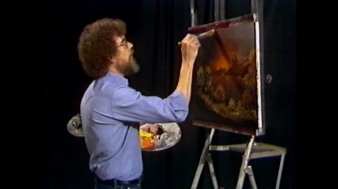
Bob Ross, The Joy of Painting, as seen on PBS. - I’ll finish with a quote from the writer C. S. Lewis (1898-1963), sent to me on my birthday by sister Ellen. “You are never too old to set another goal or dream a new dream.” Lewis was a brilliant man. Don’t doubt that.
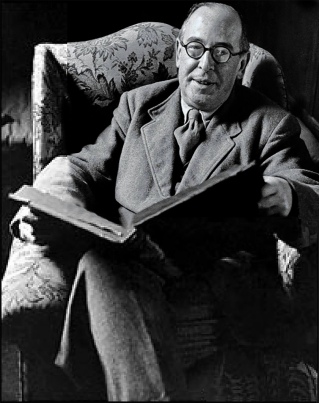
C. S. Lewis
I intend to follow his advice to the end of my days.
Dream. Dream small, dream big, but dream. Don’t stop.






























































































